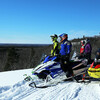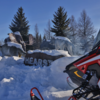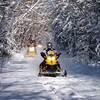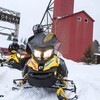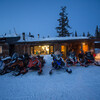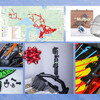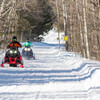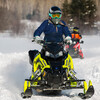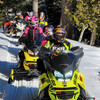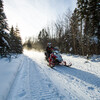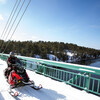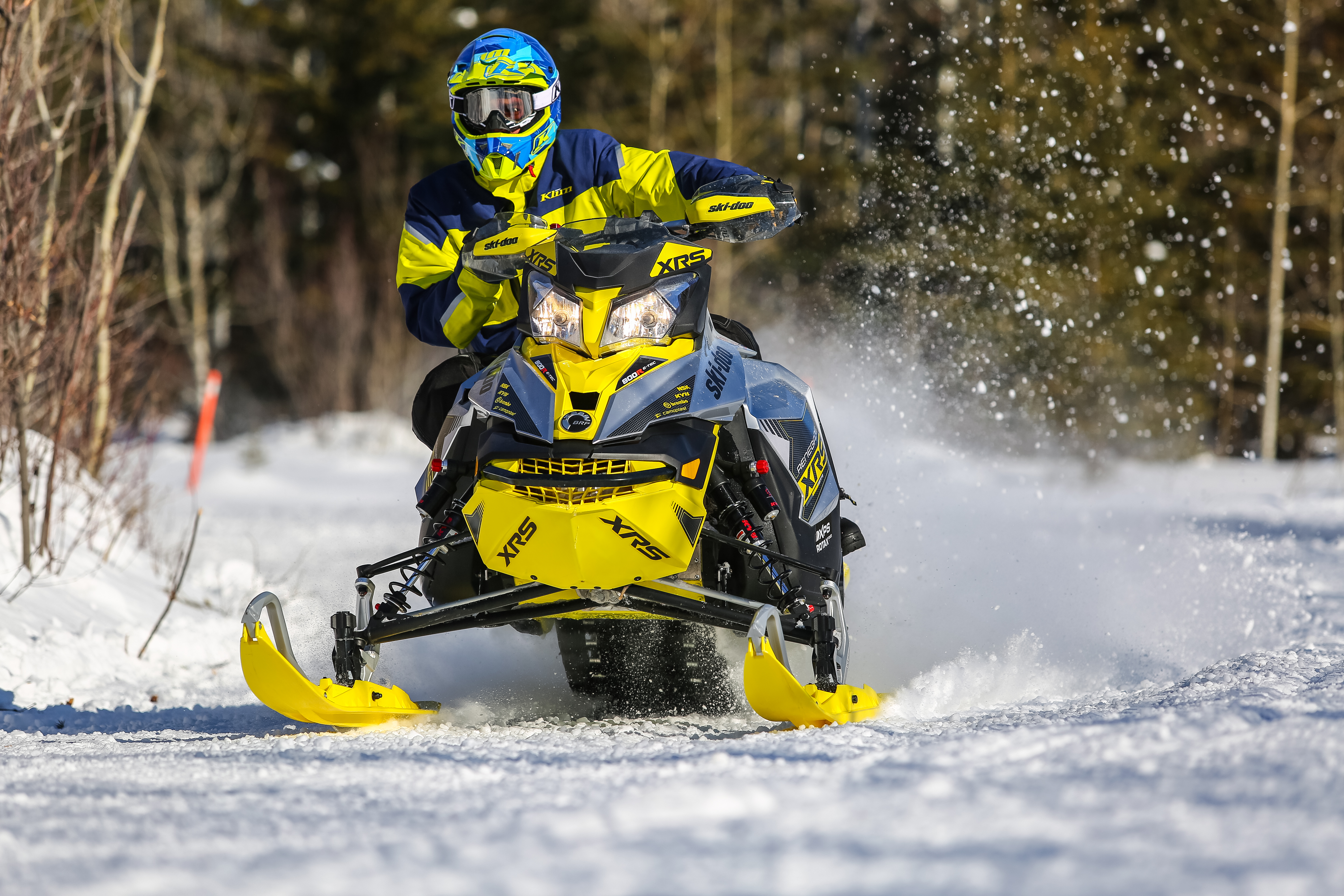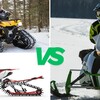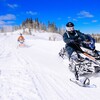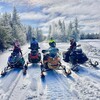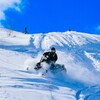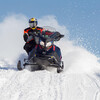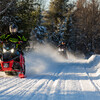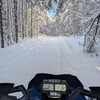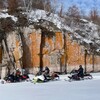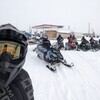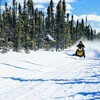
The 2020-21 Ontario Winter Weather Forecast
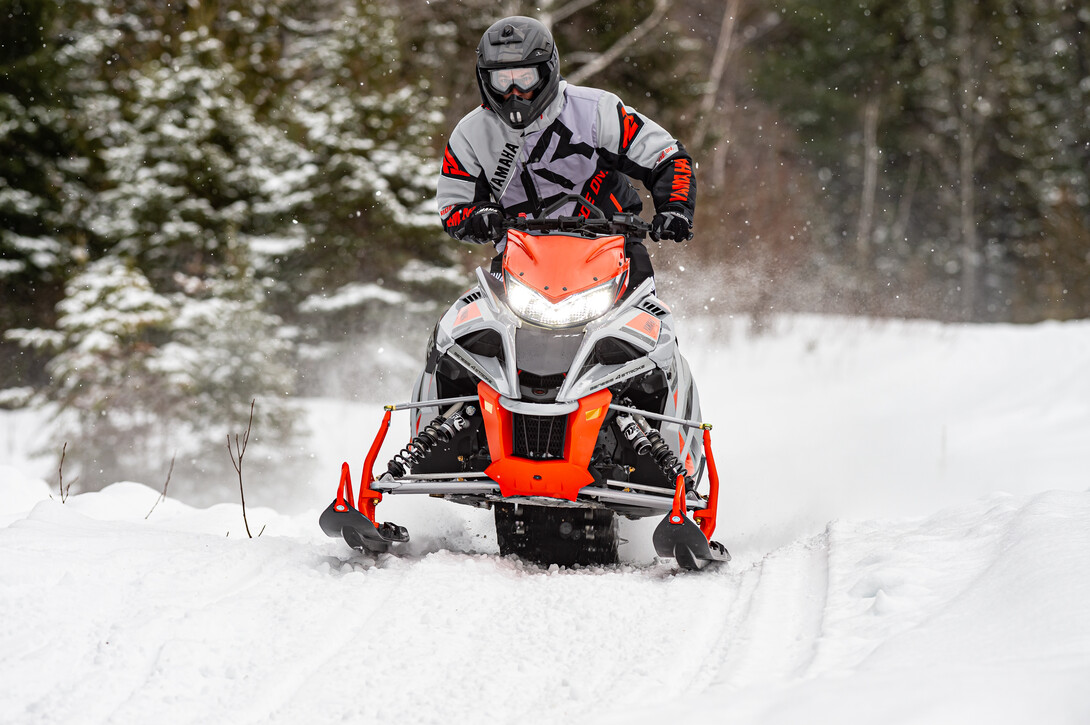
L'Ontario invite chaque voyageur à faire preuve de prudence et à respecter les normes de santé publique. Pratiquez la distanciation physique, lavez-vous les mains souvent, et portez un masque là où on le demande ou lorsque la distanciation est difficile.
Imaginez la scène.
Les arbres sont chargés de neige, tombée hier pendant la tempête. À travers les branches, vous distinguez le soleil qui projette des rayons jaunes sur la neige scintillante. Les ombres sont bleues, d’un ton à la fois clair et sombre. L’air est vif. Les arbres craquèlent, les uns après les autres. Vous faites quelques pas. La neige qui crisse sous vos bottes vous fait sourire. Puis vous tournez la clé (ou tirez sur le cordon). Le silence ouaté est rompu par le grondement du moteur qui se réchauffe. L’odeur de carburant reste emprisonnée dans l'air froid. En entrant sur le sentier, vous remarquez que le dameur a déjà fait son travail - un ruban blanc à travers la forêt vous attend! La journée est bien partie!
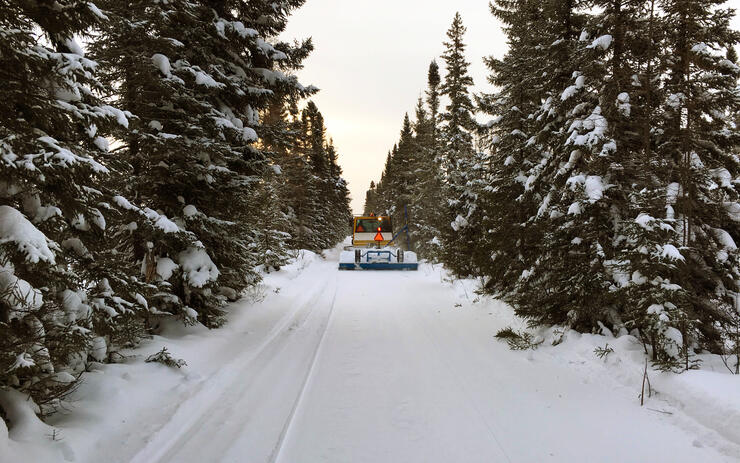
S’il y a une chose que j’ai apprise au cours des huit dernières années de rédaction des prévisions pour la saison de motoneige pour l’Ontario, c’est que des prévisions qui s’appuient sur des sources fiables et diversifiées ont beaucoup de valeur pour vous, motoneigistes. Au fil du temps, cette série d’articles a été lue et partagée des centaines de milliers de fois. C’est devenu une sorte de tradition annuelle - un signe que nous nous préparons pour la saison de motoneige.
La saison de motoneige sera-t-elle mémorable? Cette année, certaines de mes sources croient que oui, d’autres ne comptent pas là-dessus. Mais en y regardant de plus près, des sources scientifiques qui nous disent que la saison sera certainement bonne, même si les signes naturels nous font voir des perspectives négatives. Il y a tellement de choses à considérer!
Et je garde le cap sur le but de cet article, soit de vous donner le plus d'informations possible sur la saison à venir. Bien sûr, l’Ontario est une province immense et l’hiver peut être bien différent d’une région à l’autre. C’est un des nombreux facteurs qui rendent la province fantastique pour la motoneige et les motoneigistes.
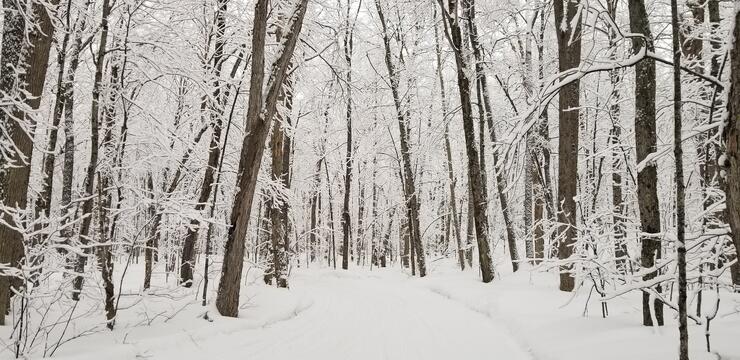
Des experts partout
Les experts ne manquent pas. L’année 2020 en a définitivement produit sa part!
Selon le Grand Robert, un expert est une «personne choisie pour ses connaissances techniques et chargée de faire des examens, des constatations, des évaluations à propos d’un fait, d’un sujet précis».
Chaque année, lorsque je prépare cet article, je consulte David Phillips, climatologue principal à Environnement Canada. Il a commencé à étudier la climatologie il y a plus de 30 ans. Dans mon livre à moi, c’est donc un expert de confiance. Phillips rapporte qu’Environnement Canada prévoit pour cet automne des conditions à la fois plus chaudes et plus sèches que la normale. Dans une entrevue publiée au début septembre, il a dit : «Ce que nous voyons, c'est peut-être plus de jours chauds que de jours froids, mais cela ne signifie pas qu’il ne peut pas y avoir de gel ou de neige sur les citrouilles.»
L’une des tendances potentiellement alarmantes, selon Phillips, c’est que nous avons vu un nombre important de jours à plus de 30°C l’été dernier. En juillet, Ottawa a connu 18 jours au-dessus de 30°C, dont quelques-uns à 35°C ou 36°C. Cet été, Toronto a également eu 35 jours où la température a dépassé 30°C, soit plus du double de la moyenne normale. L’été a été sans aucun doute intéressant et ce temps chaud a été bien accueilli, car nous sommes nombreux à passer plus de temps que jamais sur les lacs et rivières de l’Ontario.

Un autre expert, le Dr Doug Gillham, contribue fréquemment à The Weather Network – le pendant anglo de Météomédia. Dans un rapport publié à la fin septembre, le météorologue a écrit que nous pouvons nous attendre à voir arriver l’hiver avant son temps – c’est à dire en automne. Il s’attend tout de même à ce que novembre soit beaucoup plus doux que l’année dernière et que probablement les périodes de «temps d’automne agréable» se prolongeront. Selon le Dr Gillham, ce temps sera agréable pour profiter des activités de plein air, mais attention aux tempêtes.
Cependant, au moment d'écrire ces lignes, le Dr Gillham expliquait qu’il n'est pas possible de se prononcer sur la rencontre des courants froids de l’ouest du Canada et des courants chauds du sud-est des États-Unis, qui produisent souvent des tempêtes qui se déplacent rapidement. Le Dr Gillham conclut son rapport en disant qu’il est encore trop tôt pour savoir exactement quelle trajectoire suivra cette tempête. Il publiera ses dernières prévisions hivernales à la fin du mois de novembre et à ce moment-là, il aura une meilleure indication. «Ce sera la clé pour savoir si l’hiver à venir sera tout simplement doux ou s’il sera fou.»
En tant que motoneigistes, nous savons qu’il faut de bonnes conditions pour ouvrir les sentiers : les marais et les lacs doivent être gelés et les agriculteurs doivent avoir de bonnes conditions de récolte. David Phillips et le Dr Gillham avaient prévu que le temps chaud s’étirerait jusqu’à l’automne, ce qui a permis aux bénévoles des clubs de motoneige de faire un bon travail de préparation des sentiers. Je suppose que nous devrons voir en novembre ce que ces deux experts pensent de l’hiver à venir.
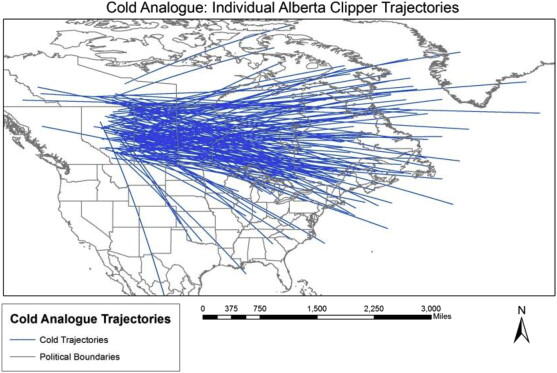
DES MODÈLES DE CONFIANCE
Début septembre, la National Oceanic and Atmospheric Administration (NOAA) a dit que les effets de La Niña se feront sentir plus prestement tout au long de l’hiver dans l’hémisphère nord. Les scientifiques disent qu’il y a 75 % de probabilités que La Niña persiste et signe jusqu’en février 2021.
Qu'est-ce que ça signifie pour l’Ontario? La Niña pourrait être une excellente nouvelle pour les motoneigistes de l’Ontario. Regardez les cartes ci-dessous : voyez comment elle affectera le courant-jet et l’hiver en Ontario. Vous pouvez facilement visualiser à quel moment l’air frais et humide rencontre l’air chaud et qu’ils se déplacent sur les Grands Lacs, mais aussi que l’effet de lac produira une neige abondante et un couloir de tempête. Vous pouvez aussi observer comment le courant-jet dans cette position peut entraîner un vortex polaire.

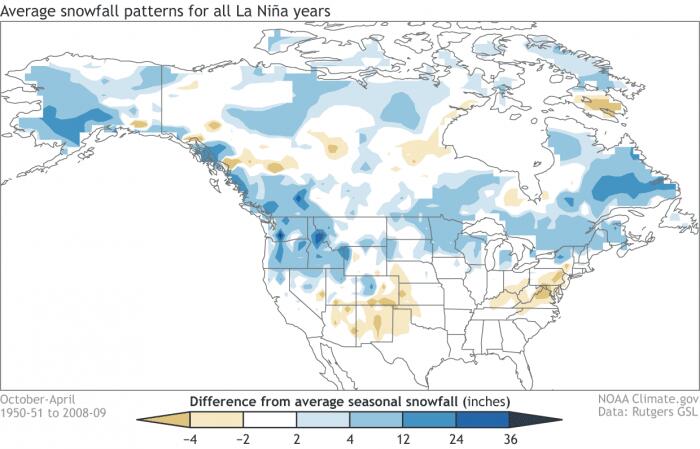
À RAS BORD
Dans un article paru dans Physics Today en octobre 2020, nous apprenions que les niveaux des Grands Lacs (qui contiennent 21 % des réserves d’eau douce du monde) restent constants – c’est-à-dire que les records persistent. Le niveau des lacs fluctue en fonction de la pluie, de la neige et de l’évaporation et à son tour, le niveau de l’eau affecte la météo. Avec autant d’eau, il faut plus de temps aux lacs pour se refroidir, donc plus de temps pour geler. L’eau libre en hiver peut résulter en effet de lac.
De 1998 à 2013, les Grands Lacs ont atteint des niveaux historiquement bas. Puis, ils ont augmenté à un rythme alarmant. C'est de 2014 à 2017 que les niveaux ont augmenté le plus rapidement, et ce, depuis le tout début de la tenue des registres.
L’article de Physics Today précise que les précipitations ont augmenté de 10 % au cours du siècle dernier et devraient encore augmenter de 10 % au cours des 100 prochaines années.
Les renseignements fournis par David Phillips d’Environnement Canada nous indiquent que nous avons eu plus de journées chaudes que d’habitude l’été dernier. Il n’est donc pas surprenant que la surface des Grands Lacs soit plus chaude qu'à la normale. Espérons, pour le littoral et les propriétaires de marina, que nous assisterons à un fort événement La Niña pour que les lacs refroidissent et que l’évaporation produise beaucoup de neige!
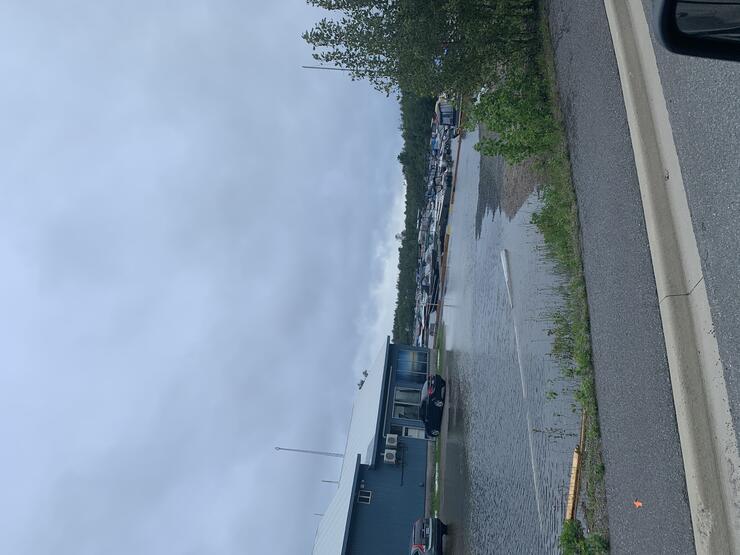
La prévision de cet hiver? Un train des neiges!
Chaque année, je cherche les descriptions amusantes que propose l’almanach. Nous avons eu droit à «manège polaire» (Polar Coaster), «claquement de dents à venir» et «Le Trône de neige» (Game of Snows). Mais le meilleur doit être le «train des neiges». C’est ce qui nous attendrait cette année!
L’Almanach du fermier se targue d’avoir un taux de précision de 80 %. On dirait donc que l’Ontario va avoir de la neige en abondance! L’Almanach a écrit, cette année : «Si vous aimez la neige, vous devriez vous diriger vers l’ouest du Québec et l’Ontario, où des conditions plus enneigées que la normale sont prévues. L’Almanach des agriculteurs canadiens prévoit une forte chute de neige pour l’Ontario et le Québec pour la deuxième semaine de janvier.
Je pense que «train des neiges», «Alberta clipper» ou «Canadian Clipper» sont du pareil au même : ils partagent la même trajectoire, avec les mêmes résultats.
Les clippers sont des systèmes météorologiques qui entraînent des chutes de température soudaines, des vents violents et des précipitations de neige rapides et importantes. Vous pouvez facilement visualiser comment le clipper «Snow Train» produira d’importantes précipitations de neige.
Ces événements ne proviennent pas seulement du système de basse pression plus chaud, mais aussi du front froid rapide qui fouette les grosses rafales. Nous avons vu un clipper rouler et déverser beaucoup de neige, mais la vraie neige provient du train produit par l’air froid se déplaçant sur les Grands Lacs. Si l’Almanach est correct (ou même correct à 80 %), la région de la ceinture de neige portera bien son nom. Je crois fermement que cela peut être l’une des meilleures nouvelles de l’Almanach pour les motoneigistes de l’Ontario depuis plusieurs années.
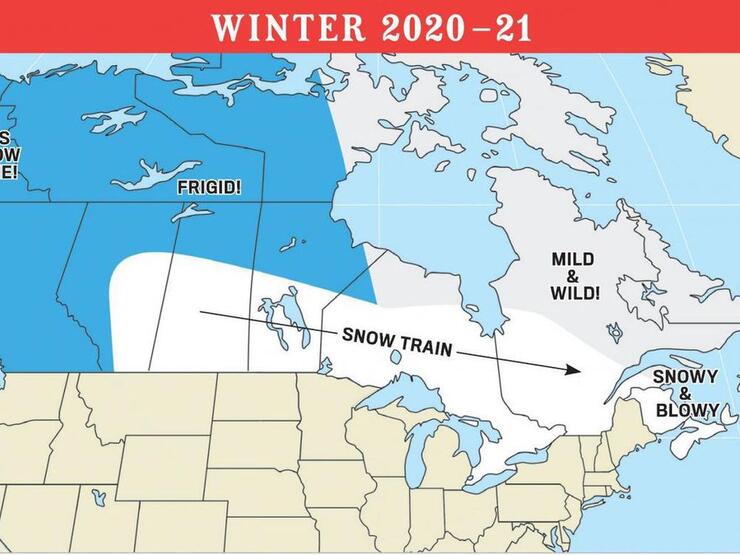
SEUL DANS LE BOIs
Bill Steer est, de loin, la personne que je connais qui passe le plus de temps seul dans le bois. Au printemps, il s’est isolé pendant plus de deux mois avec pour seuls compagnons son canot et son imagination. Jamais il ne s’ennuie lorsqu’il est dans la nature.
En observant la nature, Bill Steer a prédit la météo au cours des huit dernières années avec une précision d’environ 75 %. Le fondateur du Centre écologique du Canada, membre du corps professoral de l’Université Nipissing et du Collège Canadore, a été formé par feu Gord Restoule de la Première Nation Dokis. «Je ne sais pas s’il a pris en compte le changement climatique», me dit-il. Sa formule de prédiction repose sur 4 questions : «Quand l’hiver commencera-t-il? Combien de temps durera-t-il? À quel point sera-t-il froid? Combien de neige tombera-t-il?»
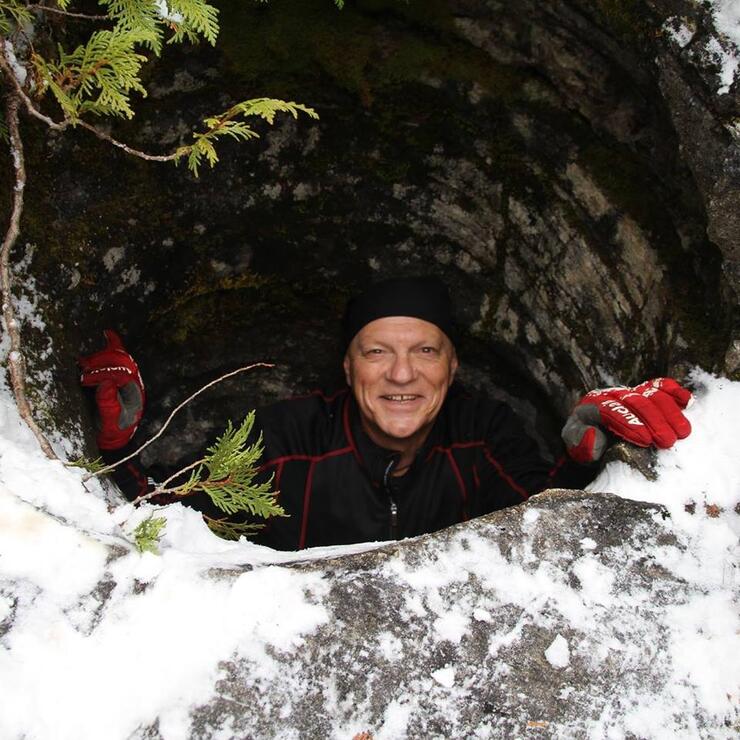
Il n’est pas encore sûr des trois derniers volets, et m’a demandé de revenir le consulter plus tard en saison. Chose certaine, Bill prévoit un début d’hiver précoce et a déclaré que les perspectives sont bonnes pour la motoneige.
«Il y a eu tellement de changements rapides ces derniers temps», dit-il, citant l’apparition de rouge dans les collines de Havilland Shores juste au nord de Sault Sainte-Marie le 6 septembre. Bien trop tôt selon Bill.
Bill a remarqué que les fougères ont tourné avant l’heure et que le sol forestier luxuriant est mort en un clin d’oeil. Les écureuils se sont précipités pour faire leurs réserves et semblent avoir une quantité infinie de caches. En septembre, les ours s’engraissaient, comme les chevreuils. Les oiseaux chanteurs ont disparu bien avant l’arrivée de septembre. Les geais bleus et les mésanges ont un chant rauque. Les grues du Canada étaient prêtes à migrer, ce qui est un autre signe d’un hiver précoce. Beaucoup de huards ont quitté leurs lacs avant la normale. Bill dit qu’il s’ennuiera de leur appel, lorsqu’il fera ses sorties en canot, le matin, dans la brume.
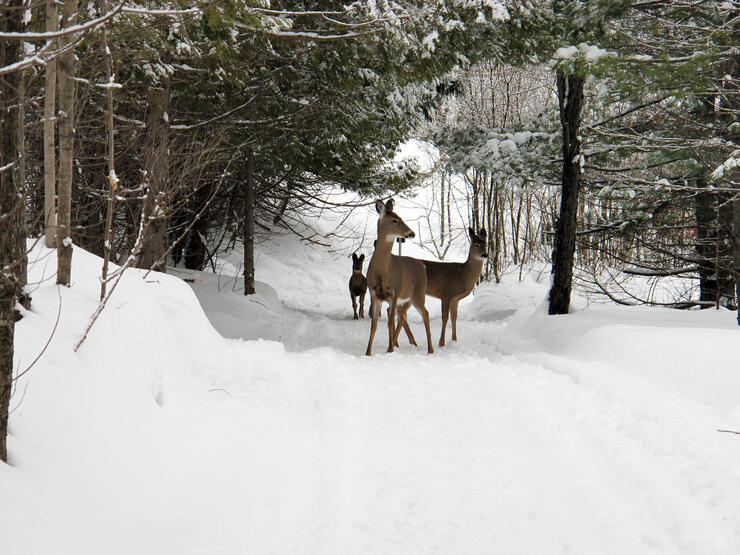
Dans ses randonnées à l’aube, la fraîcheur semble inhabituelle, l’odeur de l’été a disparu dès le début septembre, sauf en fin d’après-midi. Bill, comme les animaux, pouvait goûter l’arrivée de l’automne dans l’air. Près de l’eau, il a observé «de vastes réserves d'aliments à côté des huttes de castors.» L’année dernière, il avait vu de petits lits d’alimentation de castors qui, selon lui, sont le signe d'un hiver plus doux et plus court. Bill se risque : nous pouvons nous attendre à un début d’hiver précoce, à une quantité habituelle de neige tout au long de l’hiver, sans quantités excessives. Les températures seront douces et le printemps viendra aussi hâtivement.
J’accorde toujours une grande importance à la prédiction de Bill. Il observe la nature et met au point ses techniques d’observation depuis de nombreuses années. Cette année, je voulais approfondir ces signes naturels comme une sorte de confirmation de ce que Bill a rapporté. J’ai observé l’isia isabelle (Pyrrharctia Isabella), une chenille noir et brun qui est censée prédire l’hiver à venir. La légende veut que la largeur de la bande brune soit révélatrice : une bande étroite indique un hiver tempêteux, glacé et froid tandis qu’une large bande brune indique un hiver doux et chaud. Le positionnement de cette bague prédit également quand l’hiver commencera et quand il se terminera. Consultez ce graphique sympa pour vous aider à «lire» l’isia.
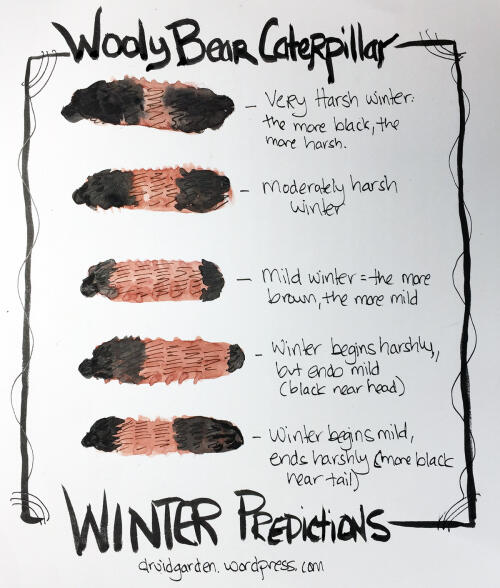
Regardez cet isia que j’ai trouvé dans mon jardin. Les prévisions pourraient-elles être plus claires?
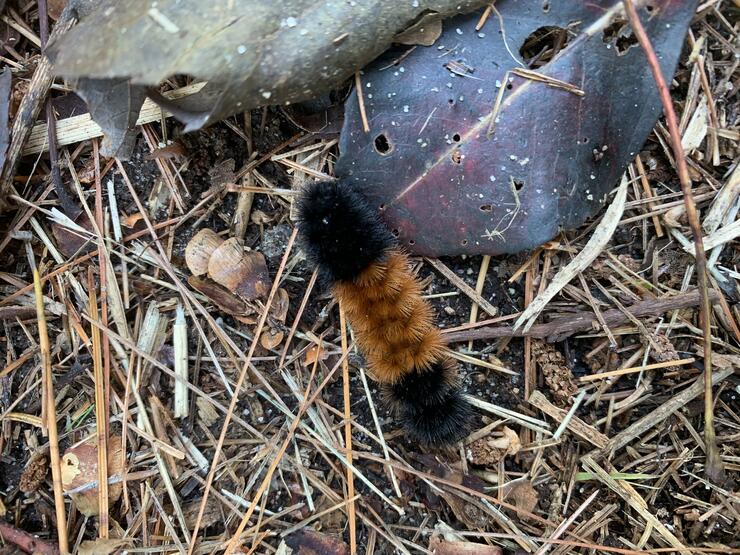
L'AVIS DU MOTONEIGISTE
J’ai suivi attentivement la demande sans précédent de véhicules tout-terrain (VTT, côte à côte, moto hors route) au cours des derniers mois. Un nombre incroyable de personnes joignent la communauté des sportifs motorisés! C’est très excitant. Dans les circonstances, je crois que nous verrons de nombreuses personnes revenir à la motoneige. Nous accueillerons aussi des recrues, familles incluses. Je vous encourage donc à partager votre passion et vos belles expériences avec d’autres dans l’espoir de les motiver à essayer la motoneige, même si ce n’est que pour une journée.
Avant même le long weekend d’août, les purs et durs (et vous savez qui vous êtes) achetaient de nouvelles motoneiges ou travaillaient sur la leur. En général, nous assistons à cette frénésie après la fête du Travail. Vous vous préparez, ce qui est un bon signe. Je vous conseille de suivre leur exemple - achetez ce nouveau véhicule maintenant ou réparez le vôtre tôt - n’attendez pas la première neige!
Le salon de la motoneige de Toronto (comme d'ailleurs) nous manquera cet automne. C’est toujours un moment fort pour moi : j’aime voir tout le monde et discuter des nouvelles technologies et des projets de randonnées. Je vous encourage à consacrer le temps que vous passeriez normalement au salon à un spectacle et à aider votre club local.
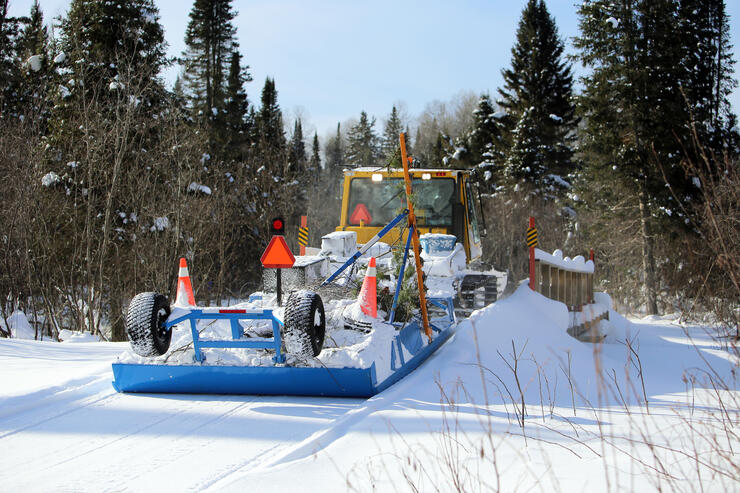
Les permis d’utilisation des sentiers de motoneige de l’Ontario sont en vente depuis le début de septembre. L’OFSC et les bénévoles des clubs locaux travaillent depuis longtemps à préparer la saison. Plusieurs nouvelles dameuses sont déployées et d’innombrables heures ont déjà été consacrées à la préparation et à la mise en œuvre de nouvelles mesures qui sont toutes intégrées dans l’initiative Trail to Ride 2021.
Le président de l’OFSC, Murray Baker, a déclaré dans un communiqué de presse : «Comme d’habitude, certaines régions auront des sentiers prêts à rouler plus tôt que d’autres, en fonction de leur emplacement et de la météo. Notre objectif principal est d’avoir des sentiers dans tous les districts de l’OFSC prêts à ouvrir dès que Dame Nature le permet. Nous veillons à ce que nos districts, clubs et bénévoles travaillent intelligemment et en toute sécurité tout au long de l’automne et de l’hiver pour que les sentiers restent ouverts.»
C’est une très bonne nouvelle à mon avis. Si vous doutez de l’ouverture des sentiers, considérez votre permis comme un investissement dans le sport que vous aimez. Et ne roulez pas si vous n’avez pas de permis : il n’y a pas de sentiers sans le soutien des acheteurs de permis - achetez où vous roulez pour vous assurer que nous avons des sentiers demain.
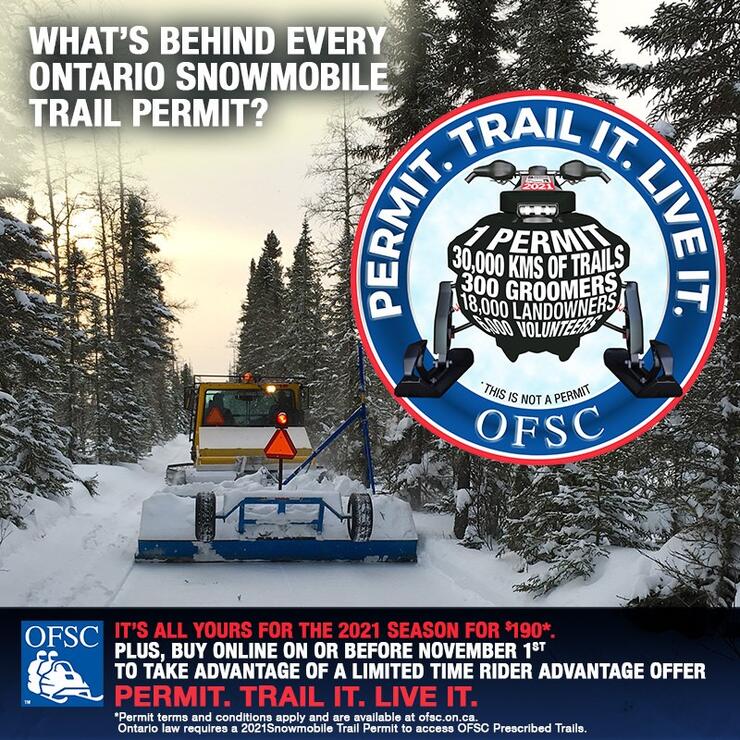
LA PRÉVISION
L’arrivée de l’hiver sera soudaine, d’abord marquée par des nuits sous zéro et des journées fraîches, puis par une série de tempêtes prédites par l’Almanach et confirmées par la science. Une quantité abondante de neige et un Noël blanc nous attendent, selon BackRoads Bill. Nous aurons donc de nombreuses possibilités de motoneige au début de janvier à travers la province. Les Grands Lacs mettront du temps à geler et l’effet de lac fera son œuvre. L’équinoxe de printemps marquera véritablement la fin de l'hiver pour de nombreux habitants de notre province, mais la partie nord de la province sera toujours sous une épaisse couche de neige offrant des possibilités de motoneige jusqu’en avril.
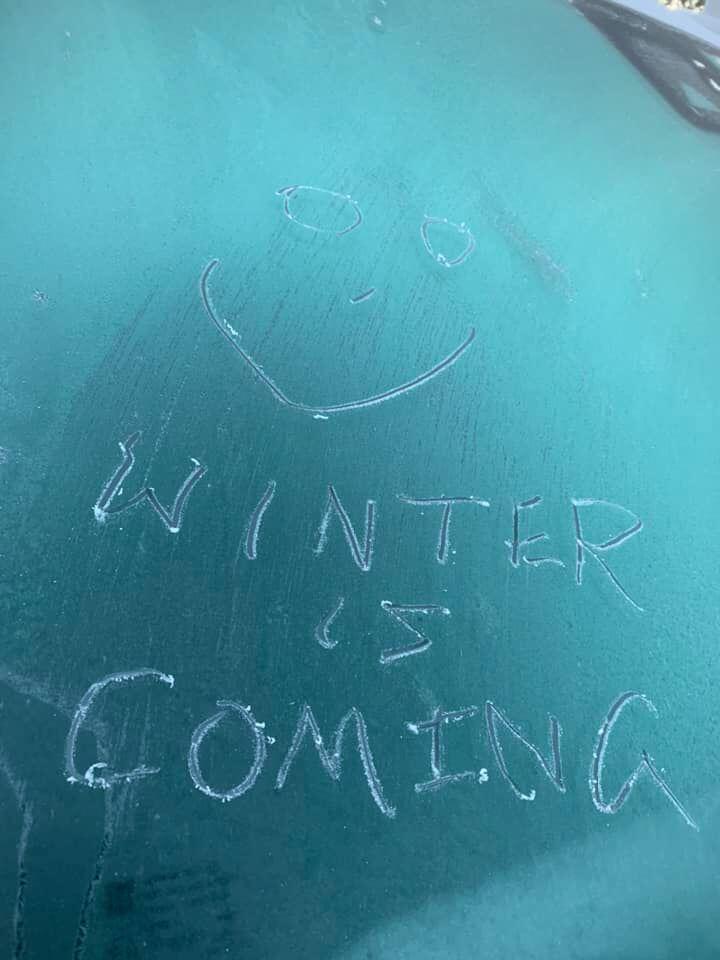
LE MOT DE LA FIN
L’hiver va être génial. En fait, ça dépend de vous. Pour moi, cet hiver sera l’un des plus spéciaux et des plus mémorables alors que je ferai découvrir la motoneige à mon fils Finley!
La prévision est faite. Sortez! Le meilleur conseil que j’ai donné en 8 ans de prévisions, c'est de sortir dès l’ouverture de sentiers. S'il y a une chose dont vous pouvez être sûr dans le Nord de l'Ontario, c’est que l’hiver est garanti!
Rendez-vous sur les sentiers.
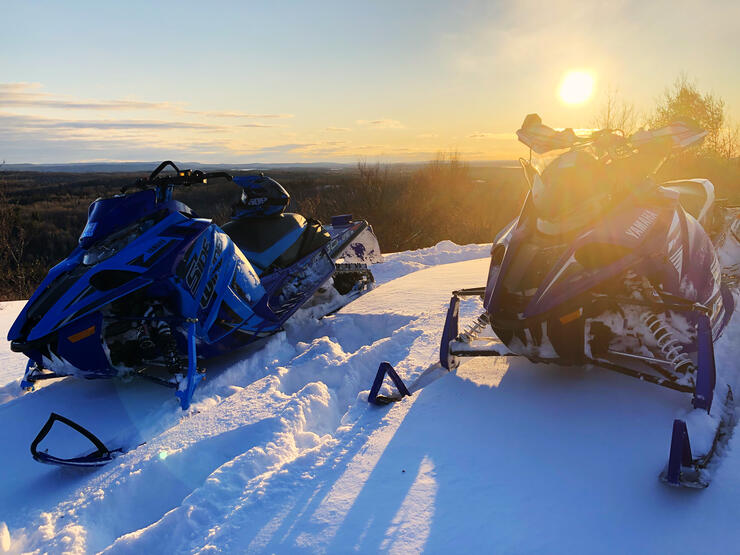
Recommended Articles

The Complete List of Snowmobile Events in Ontario 2025-2026

The Best Snowmobile-Friendly Lodges
Snowmobiling Winter Weather Forecast 2025-2026

I Rode the Explorers Snow Tour in Ontario and Here’s What It Was Like

Why Ontario is One of the Best Snowmobile Destinations in the World
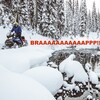
11 TikToks That Prove Ontario is the Best Place To Go Snowmobiling

5 Weekend Snowmobile Getaways Near the GTA
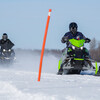
31 Ways To Get In The Know About Snowmobile Trail Riding in Ontario

A Beginner's Guide to Snowmobile Lingo


